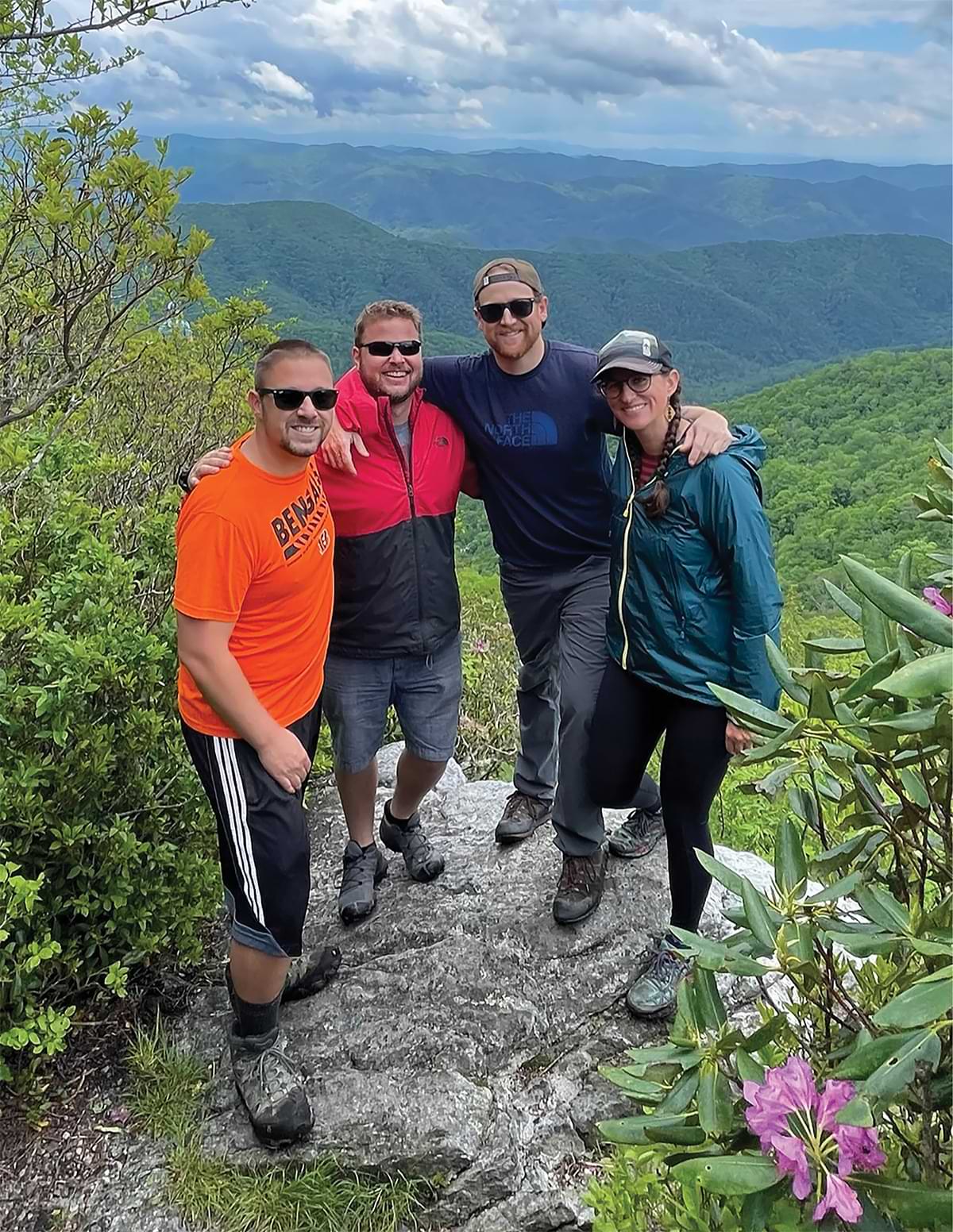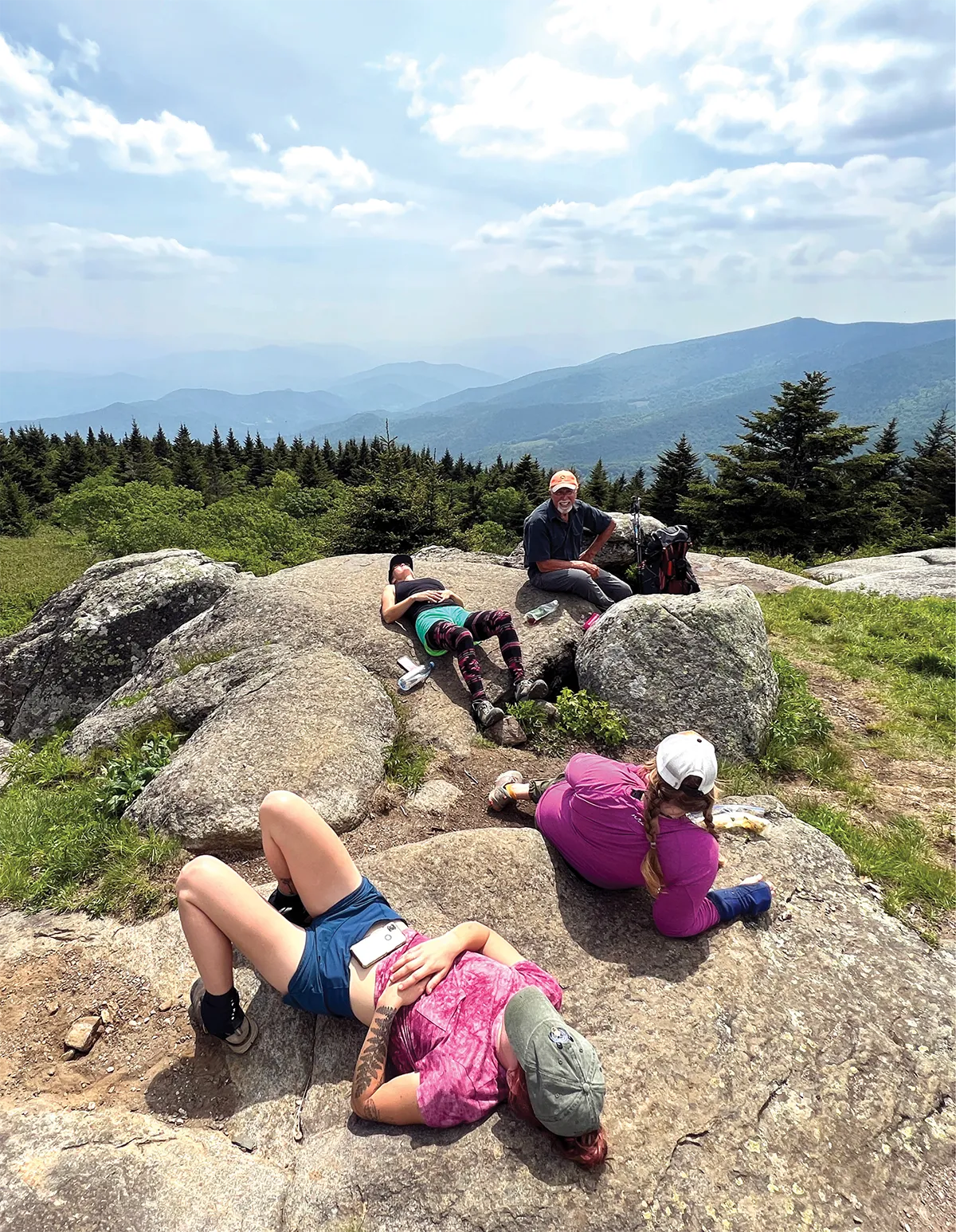
My little hiking group has been meeting once a month for the last three years. During the early months of the pandemic, I remember the feeling of isolation becoming more prevalent in our lives as our small rural circles began to feel even smaller. I started a Facebook hiking group to reconnect and get local friends out on the Trail. The A.T. runs over 70 miles along our county line in North Carolina, spanning two iconic locations from Max Patch to Big Bald. Being out on the Trail every month became the social and therapeutic outlet we didn’t know we collectively needed so badly in our busy lives.

– TIM CAHILL

Dr. Murthy’s recommendations for combatting loneliness and improving public health in America include six pillars for advancing social connection: strengthening social infrastructure, enacting pro-connection public policies, mobilizing the health sector, reforming digital environments, deepening our knowledge about the importance of social connection, and cultivating a community of connection.
Loneliness and isolation can increase risks to our physical, mental, and societal health. The Surgeon General’s report states that “increased connection can help reduce the risk of serious health conditions such as heart disease, stroke, dementia, and depression. Communities where residents are more connected with one another fare better on several measures of population health, community safety, community resilience when natural disasters strike, prosperity, and civic engagement.”
With a public health crisis of loneliness, finding connection on the Appalachian Trail might be just the right medicine. Dr. Murthy states that “given the significant health consequences of loneliness and isolation, we must prioritize building social connection the same way we have prioritized other critical public health issues such as tobacco, obesity, and substance use disorders. Together, we can build a country that’s healthier, more resilient, less lonely, and more connected.”
Of the three big hiking trails in America, the A.T. is undoubtedly the most social. Even if you go out on the Trail alone, you will almost surely connect with others while walking. The word “tramily” has not officially made Websters yet, but this portmanteau for “trail” and “family” is probably a term you have heard in relation to the Appalachian Trail. A tramily refers to any group that spends a significant amount of time together on a trail. The term is not limited to a close-knit group on a thru-hike. A trail family can take on many forms of bonding with and supporting one another. Tramilies can be the group of volunteers you join for Trail maintenance every Friday, a friend group that meets up every year to do a new section along the Trail, or the partner, children, or grandchildren you bring along with you. A trail family can also be the people you meet while on the A.T. that instantly become your roving clan of kindred spirits.

People can get very close quickly on the Trail. But unlike normal relationships that take time to build in the real world, forming a tramily can feel accelerated for some. Traveling with a trail family doesn’t mean you hike every mile together. Even if two people shared every mile hand in hand, they wouldn’t walk the same trail or have the exact same experience. I thru-hiked with my friend, Scout, and despite sharing mail drops and sometimes a tent, we had two very different hikes. We often hiked alone or joined one or a few people throughout the day, but we always met up at lunch and camped together at night.

From my experience, “embracing the suck” together on the difficult days somehow makes it more palatable. Hiking through a sideways rainstorm on top of an exposed ridge or post holing through deep snow is somehow more tolerable when you are laughing and sharing every miserable step with someone else. Being with a tramily can also make the good times that much greater. A shared sunset. A much-needed snack break.
Connections made on the Appalachian Trail can last a lifetime. Or maybe just until the trailhead parking lot. For some hikers, sharing the experience of putting one foot in front of the other — for 2 miles or 2,000 miles — can be one of the greatest joys of time outdoors. And it might be just what the doctor ordered.